 W
WThe history of the modern state of Singapore dates back to its founding in the early nineteenth century; however, evidence suggests that a significant trading settlement existed on the Island of Singapore in the 14th century. At the time, the Kingdom of Singapura was under the rule of Parameswara, who killed the previous ruler before he was expelled by the Majapahit or the Siamese. It then came under the Malacca Sultanate and then the Johor Sultanate. In 1819, British statesman Stamford Raffles negotiated a treaty whereby Johor allowed the British to locate a trading port on the island, leading to the establishment of the crown colony of Singapore in 1819.
 W
WThe 1969 race riots of Singapore were one of the two riots encountered in post-independence Singapore. The seven days of communal riots from 31 May to 6 June 1969, a result of the spillover of the 13 May Incident in Malaysia, resulted in a final toll of 4 dead and 80 wounded.
 W
WThe All-Malaya Council of Joint Action (AMCJA) was a coalition of political and civic organisations in Malaya formed to participate in the development of a constitution for post-war Malaya in preparation for independence and to oppose the Constitutional Proposals for Malaya which eventually formed the basis of the Federation of Malaya Agreement.
 W
WAPEC Singapore 2009 was a series of political meetings held around Singapore between the 21 member economies of the Asia-Pacific Economic Cooperation during 2009. It culminated in the 17th APEC Economic Leaders' Meeting (AELM) held in Singapore from 14 to 15 November 2009.
 W
WBan Zu or Banzu was a port settlement believed to have thrived in Singapore during the 14th century. It is thought to be located on Fort Canning Hill and the area on the north bank of the Singapore River basin between the hill and the sea. It was mentioned by the Chinese traveller Wang Dayuan in his work Daoyi Zhilüe together with Long Ya Men as the two settlements that made up Temasek. It may have been abandoned before 1400 after an attack by either the Siamese or the Majapahit.
 W
WSingapore in the Straits Settlements refers to a period in the history of Singapore from 1826 to 1942, during which Singapore was part of the Straits Settlements together with Penang and Malacca. Singapore was the capital and the seat of government of the Straits Settlement after it was moved from George Town in 1832.
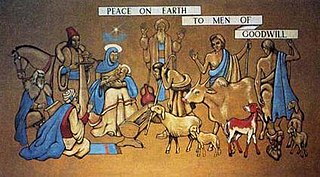 W
WThe Changi Murals are a set of five paintings of biblical theme painted by Stanley Warren, a British bombardier and prisoner-of-war (POW) interned at the Changi Prison, during the Japanese occupation of Singapore in World War II (WWII). His murals were completed under difficult conditions of sickness, limited materials and hardships. With a message of universal love and forgiveness, they helped to uplift the spirits of the POWs and sick when they sought refuge in the prison chapel.
 W
WThe Chinese middle schools riots were a series of riots that broke out in the Chinese Singaporean community in 1956, resulting in 13 people killed and more than 100 injured.
 W
WThe City of Singapore existed from 1951 to 1965 in the then British Crown colony of Singapore, with the City Council as the governing authority. Before 1951 the City Council was known as the Municipal Commission. The rest of the crown colony was under the authority of the Singapore Rural Board.
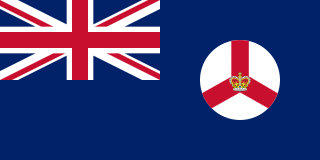 W
WThe Colony of Singapore was a British Crown colony that existed from 1946 and succeeded by the State of Singapore in 1959. When the Empire of Japan surrendered to the Allies at the end of World War II, Singapore was returned to the British in 1945. In 1946, the Straits Settlements were dissolved and together with Cocos-Keeling and Christmas Island, Singapore became a separate Crown colony. The colony was governed by the United Kingdom until it gained partial internal self-governance in 1955.
 W
WThe early history of Singapore refers to its pre-colonial era before 1819, when the British East India Company was led by Sir Stamford Raffles established a trading settlement on the island and set in motion the history of Singapore.
 W
WThe Federation of Malaya was a federation of what previously had been British Malaya comprising eleven states that existed from 1 February 1948 until 16 September 1963. The Federation became independent on 31 August 1957, and in 1963, Malaysia was formed when the federation united with the Singapore, North Borneo, and Sarawak Crown Colonies.
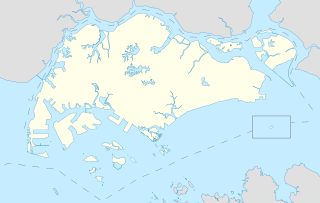 W
WThe Founders' Memorial is a planned memorial to the founders of Singapore, to be built within the Bay East Garden of the Gardens by the Bay.
 W
WThe establishment of a British trading post in Singapore in 1818 by Sir Stamford Raffles led to its founding as a British colony in 1824. This event has generally been understood to mark the founding of colonial Singapore, a break from its status as a port in ancient times during the Srivijaya and Majapahit eras, and later, as part of the Sultanate of Malacca and the Johor Sultanate.
 W
WHikayat Abdullah is a major literary work by Abdullah bin Abdul Kadir, a Malacca-born Munshi of Singapore. It was completed in 1845 and first published in 1849, making it one of the first Malay literary texts to be published commercially. Abdullah's authorship was prominently displayed in this text and the contents were conveyed in simple, contemporary Malay. Unlike typical classical Malay literary works that contain mythical and legendary stories, Abdullah's work dealt with social realism.
 W
WSingapore General Hospital (SGH) is Singapore's first general hospital and also its oldest and largest hospital. It is located along Outram Road, in the heart of a medical hub known as the Outram Campus. The hospital's history spans nearly two centuries and can be traced back to the British colonial era of 19th century Singapore.
 W
WThe history of the Mass Rapid Transit system of Singapore commenced with its planning in the 1960s, which finally led to its opening in 1987 with the launch of the 6 km section of the North South Line from Yio Chu Kang to Toa Payoh.
 W
WThe Hock Lee bus workers' strike began on 23 April 1955. The incident was a result of failed negotiations between the Hock Lee Amalgamated Bus Company and its bus workers. The workers wanted better working conditions while the employers wanted to protect their business interests. The strikes eventually escalated and resulted in a clash among the Singapore Bus Workers Union, Hock Lee Employee's Union, the Singapore Chinese Middle Schools Student Union and law enforcement on 12 May 1955. The event has been commonly understood as a violent confrontation between colonialists and communists.
 W
WJalan Kubor Cemetery, sometimes called Victoria Street Cemetery, is a historical royal Muslim cemetery in Singapore’s Kampong Glam neighbourhood.
 W
WThe Japanese Cemetery Park is a Japanese cemetery and park in Hougang, Singapore. It is the largest Japanese cemetery in Southeast Asia at 29,359 square metres, consisting of 910 tombstones that contain the remains of members of the Japanese community in Singapore, including young Japanese prostitutes, civilians, soldiers and convicted war criminals executed in Changi Prison. It was gazetted as a memorial park by the Singapore government in 1987.
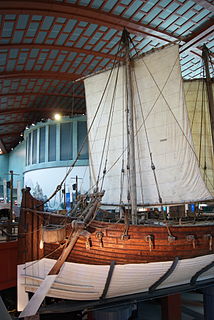 W
WThe Jewel of Muscat is a ship based on the design of the Belitung shipwreck, an Arabian dhow that was found off the coast of Belitung Island, Indonesia, in 1998 and subsequently salvaged. It was built in a joint effort by the governments of Oman and Singapore and Mike Flecker, one of the people employed by the salvage company Seabed Explorations at the time of the original recovery.
 W
WThe Legislative Assembly of the State of Singapore was the legislature of the government of Singapore from 1955 to 1965 and the predecessor of the Parliament of Singapore. The Rendel Constitution, proposed in 1953, sought to give the local population more self-governance as the Merdeka independence movement grew. This Constitution took effect upon the conclusion of the general election of 1955, creating a new Legislative Assembly to replace the Legislative Council of Singapore. In contrast to the Legislative Council, the majority of seats in the Legislative Assembly in 1955 were allotted by election rather than appointment by the colonial administration. 25 seats were elected and 7 were appointed. The colonial administration still reserved significant power, such as that of veto and control of certain aspects of government.
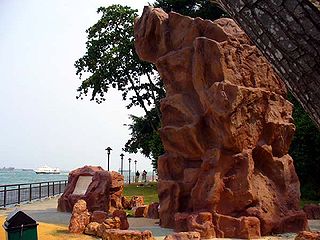 W
WLong Ya Men or Dragon's Teeth Gate, is the name Chinese explorer Wang Dayuan recorded for Batu Belayar, a craggy granite outcrop that formerly stood at the gateway to Keppel Harbour in Singapore. In his description, “The strait runs between the two hills of the Danmaxi (Temasek) natives which looked like dragon’s teeth.” From there, the name Long Ya Men or Dragon Teeth’s Gate was born.
 W
WThe Malaysia Bill is an annex of the Agreement relating to Malaysia between United Kingdom of Great Britain and Northern Ireland, Federation of Malaya, North Borneo, Sarawak and Singapore. It gave effect to the Agreement where that the British colonies of North Borneo, Sarawak and the State of Singapore should be federated with the existing States of the Federation of Malaya and the name of the federation should be Malaysia, and the Federal constitution wherewith to amend and adopt the Constitution of the Federation of Malaya so as to provide for the admission of those States. it adopted its present name, the name of the Constitution of the Federation of Malaya should be changed into Constitution of Malaysia.
 W
WMaria Hertogh, also known as Bertha Hertogh, Nadra binte Ma'arof, Nadra Adabi and simply as Natrah, was a Dutch woman of Eurasian extraction and Malay upbringing, notable for being at the centre of the Maria Hertogh riots as a girl.
 W
WThe National Museum of Singapore is a museum in Singapore dedicated to the history of Singapore. It is the oldest museum in Singapore, with its history dating back to 1849, when it was started as a section of a library at Singapore Institution and called the Raffles Library and Museum. After several relocations, in 1887 it moved to its permanent site at Stamford Road in the Museum Planning Area. Between 1993 and March 2006, it was known as the Singapore History Museum; it was given its present name in 1965.
 W
WParameswara, thought to be the same person named in the Malay Annals as Iskandar Shah, was the last king of Singapura and the founder of Malacca. According to the Malay Annals, he ruled Singapura from 1389 to 1398. The king fled the island kingdom after a Majapahit naval invasion in 1398 and founded his new stronghold on the mouth of Bertam river in 1402. Within decades, the new city grew rapidly to become the capital of the Malacca Sultanate. Portuguese accounts however, written a hundred years after his death, suggest he was from Palembang in Sumatra and usurped the throne of Singapura; he was driven out, either by the Siamese or the Majapahit, and went on to found Malacca.
 W
WThis is a survey of the postage stamps and postal history of Singapore.
 W
WRaffles's Landing Site is the location where tradition holds that Sir Stamford Raffles landed in on 28 January 1819. The site is located at Boat Quay within the Civic District, in the Downtown Core of the Central Area, Singapore's central business district.
 W
WThe history of the Republic of Singapore began when Singapore was expelled from Malaysia and became an independent republic on 9 August 1965. After the separation, the fledgling nation had to become self-sufficient, and faced problems including mass unemployment, housing shortages and lack of land and natural resources such as petroleum. During Lee Kuan Yew's term as prime minister from 1959 to 1990, his administration curbed unemployment, raised the standard of living and implemented a large-scale public housing programme. The country's economic infrastructure was developed, racial tension was eliminated and an independent national defence system was created. Singapore evolved from a dying nation to first world status towards the end of the 20th century.
 W
WThe Revere Bell was a gift to Singapore by Mrs. Maria Revere Balestier, the daughter of Paul Revere and wife of the first American Consul to Singapore, Joseph Balestier. Cast by the Revere Copper Company in Boston, Massachusetts, it is the only Revere bell outside the United States. The bell is 81 centimetres (32 in) in height and 89 centimetres (35 in) in diameter with a clapper underneath. Maria Revere presented the bell to the first Church of St. Andrew in 1843 on condition that it be used to sound a curfew for five minutes at 8:00 pm every night. The curfew bell rang until 1855 when the church was demolished, and was resumed when the second church was constructed in its place in 1861 until it was permanently discontinued in 1874.
 W
WRiau-Lingga Sultanate, also known as the Lingga-Riau Sultanate, Riau Sultanate or Lingga Sultanate was a Malay sultanate that existed from 1824 to 1911, before being dissolved following Dutch intervention.
 W
WSinga The Courtesy Lion was a mascot used for various public education campaigns in Singapore. It was created to educate the public on courtesy, graciousness and eventually kindness. A public education campaign featuring Singa the Lion was launched in 1982 under the National Courtesy Campaign with the slogan, "Courtesy is part of our tradition, it's so nice to be courteous."
 W
WThe Singapore Act 1966 was an Act of the Parliament of the United Kingdom that admitted Singapore as a sovereign state into the Commonwealth of Nations with retroactive effect from 9 August 1965, being the date on which Singapore became a sovereign state separate from and independent of Malaysia within the Commonwealth.
 W
WThe Singapore Buddhist Lodge is a charitable organization organisation in Singapore. Founded in 1934, it is one of the oldest charities in Singapore.
 W
WThe Singapore cable car crash was a fatal accident on the Singapore Cable Car system that occurred at about 6 p.m. on 29 January 1983, when the derrick of the Eniwetok, a Panamanian-registered oil rig, passed under the aerial ropeway and struck the cable that stretched over the waterway between the Jardine Steps Station and the Sentosa Station. As a result, two cabins plunged 55 metres (180 ft) into the sea, killing seven people. The oil rig was being towed away from Keppel Wharf when it became entangled in the cable and caused it to snap. It also left thirteen people trapped in four other cabins between Mount Faber and Sentosa. The disaster was the first involving death or injury since the cable car system opened in February 1974.
 W
WThe Singapore Kindness Movement is a non-government, non-profit organisation, a registered charity and an Institution of Public Character that executes public education programs aimed at cultivating kindness and graciousness in Singaporean society. It was officially launched in 1997. The movement serves as the successor to the Singapore Courtesy Council that oversaw the National Courtesy Campaign (Singapore) from the 1980s through the 1990s.
 W
WThe 1915 Singapore Mutiny, also known as the 1915 Sepoy Mutiny or the Mutiny of the 5th Light Infantry, was a mutiny involving up to half of a regiment of 850 Indian Muslim sepoys against the British in Singapore during the First World War. The mutiny, on 15 February 1915, lasted nearly seven days. It resulted in the deaths of eight British officers and soldiers, two Malay officers and one soldier, 14 British civilians, five Chinese and Malay civilians and one German internee before it was finally quelled by British forces and Allied naval detachments.
 W
WThe Kingdom of Singapura was a historical Malay kingdom thought to have been established on the main island of Singapore, from 1299 to 1398. Conventional view marks c. 1299 as the founding year of the kingdom by Sang Nila Utama, whose father is Sang Sapurba, a semi-divine figure who according to legend is the ancestor of several Malay monarchs in the Malay World. The historicity of this kingdom based on the account given in the Malay Annals is uncertain, and many historians only consider its last ruler Parameswara a historically attested figure. Archaeological evidence from Fort Canning Hill and the nearby banks of the Singapore River has nevertheless demonstrated the existence of a thriving settlement and a trade port in the 14th century.
 W
WPaduka Sri Rana Wikrama ('Ranavikrama') was the eldest son of Sri Wikrama Wira with his wife Nila Panjadi, and the third Raja of Singapura. He was known as Raja Muda his accession and married to a daughter of Bendahara Tun Perpatih Muka Berjajar. His reign was from 1362 to 1375.
 W
WThe self-governance of Singapore was carried out in several stages. Since the founding of Singapore in 1819, Singapore had been under the colonial rule of the United Kingdom. The first local elections on a limited scale for several positions in the government of Singapore started in 1948 following an amendment to the Constitution of Singapore.
 W
WSingapore in the Straits Settlements refers to a period in the history of Singapore from 1826 to 1942, during which Singapore was part of the Straits Settlements together with Penang and Malacca. Singapore was the capital and the seat of government of the Straits Settlement after it was moved from George Town in 1832.
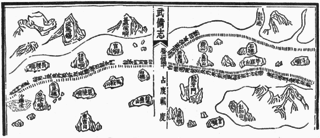 W
WTemasek is an early recorded name of a settlement on the site of modern Singapore. The name appears in early Malay and Javanese literature, and it is also recorded in Yuan and Ming Chinese documents as Danmaxi. Two distinct settlements were recorded in Temasek – Long Ya Men and Ban Zu. The name is used in modern-day Singapore for national honours as well as institutions and corporations.
 W
WSang Nila Utama was a Srivijayan prince from Palembang, who founded the Kingdom of Singapura in 1299. His official title adopted upon his coronation was Sri Tri Buana, which can be translated as "Lord of Three Worlds"; the "Three Worlds" may refer to the three realms of the universe – the overworld/heaven of the gods, the world of humans, and the underworld of demons or his lordship over Java, Sumatra and Temasek/Singapura. This title is attested to elsewhere in Southeast Asia.